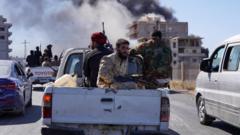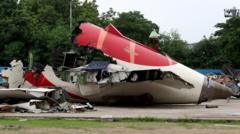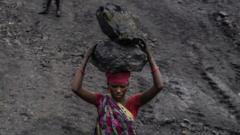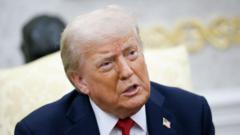A journalist reflects on the stark differences and similarities between past and present conflicts between the two nations.
Escalating India-Pakistan Conflict: A Historical Perspective

Escalating India-Pakistan Conflict: A Historical Perspective
Tensions between India and Pakistan reach unprecedented levels amidst modern warfare and misinformation.
As the conflict between India and Pakistan intensifies, the ramifications extend well beyond the contested territory of Kashmir, marking an alarming period reminiscent of the last declared war in 1971. Reporter Hari Kumar reflects on this critical juncture during a live update from New Delhi, underscoring how the current escalation has sparked fear among residents just as it did decades ago.
Kumar recounts memories of his youth, recalling the sirens and blackouts during the 1971 war, a time when news was primarily delivered through limited radio broadcasts. The situation today is strikingly different, as hostilities are centered around the northern borders, where both nations have engaged in rapid military strikes, increasingly utilizing drones and missiles aimed at urban centers.
What complicates matters exponentially is the surge of disinformation flooding social media and traditional news outlets. Kumar suggests that this chaotic flow of information exacerbates panic and confusion, making journalistic reporting increasingly challenging in what has become one of the most complex information landscapes he's encountered in over thirty years.
Despite advancements in technology and economic stature—the last war occurred when India was still developing economically—nationalist sentiments drive the same fervor among citizens, albeit expressed through new channels. The stakes are notably higher now, as India has emerged as a global economic force and technological power. Both nations possess advanced weaponry that has the potential to make borders obsolete, converting every inch of land into a possible target.
As tensions rise, the profound impacts of historical conflicts and modern technology intertwine, creating a landscape fraught with risk and uncertainty.
Kumar recounts memories of his youth, recalling the sirens and blackouts during the 1971 war, a time when news was primarily delivered through limited radio broadcasts. The situation today is strikingly different, as hostilities are centered around the northern borders, where both nations have engaged in rapid military strikes, increasingly utilizing drones and missiles aimed at urban centers.
What complicates matters exponentially is the surge of disinformation flooding social media and traditional news outlets. Kumar suggests that this chaotic flow of information exacerbates panic and confusion, making journalistic reporting increasingly challenging in what has become one of the most complex information landscapes he's encountered in over thirty years.
Despite advancements in technology and economic stature—the last war occurred when India was still developing economically—nationalist sentiments drive the same fervor among citizens, albeit expressed through new channels. The stakes are notably higher now, as India has emerged as a global economic force and technological power. Both nations possess advanced weaponry that has the potential to make borders obsolete, converting every inch of land into a possible target.
As tensions rise, the profound impacts of historical conflicts and modern technology intertwine, creating a landscape fraught with risk and uncertainty.

















